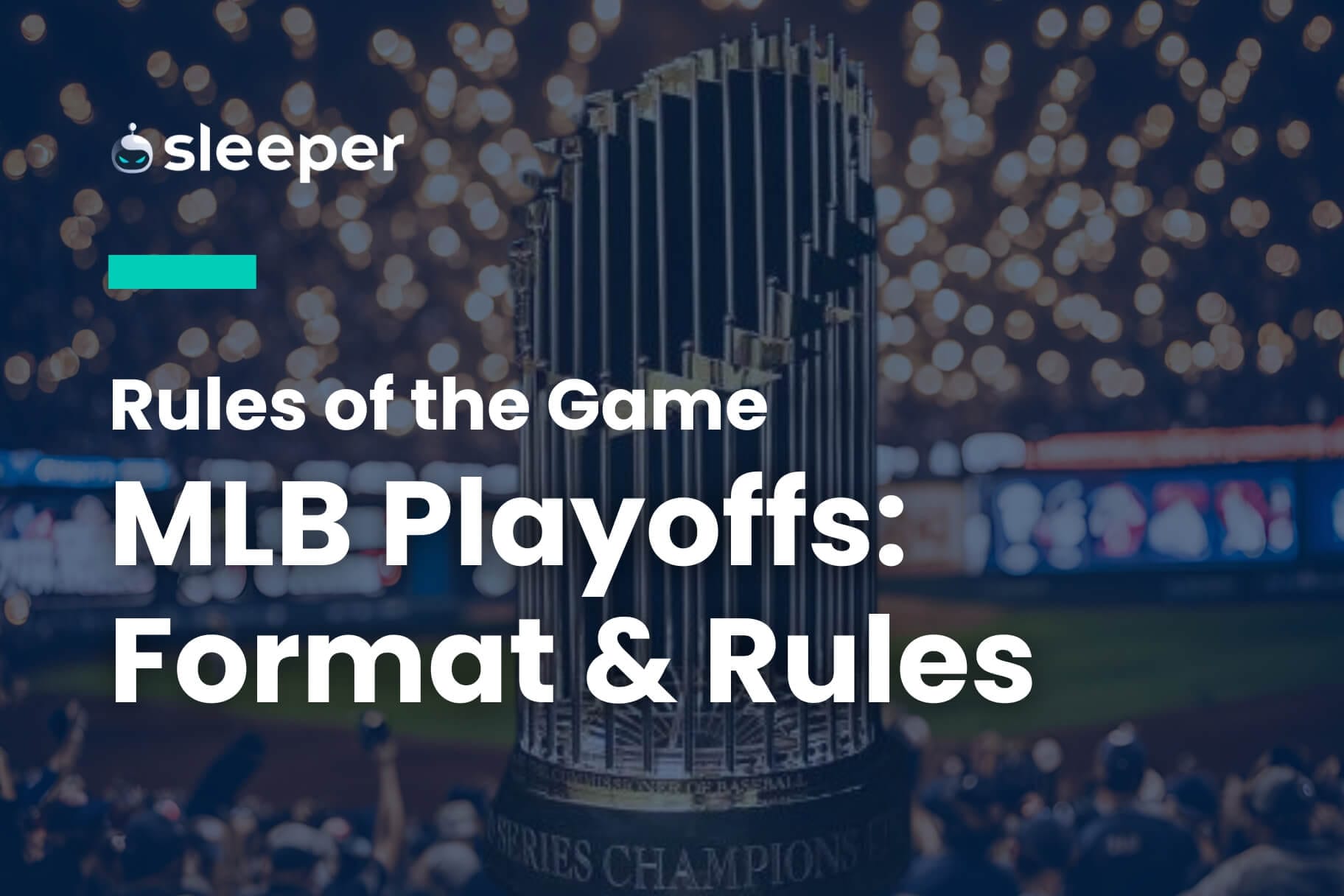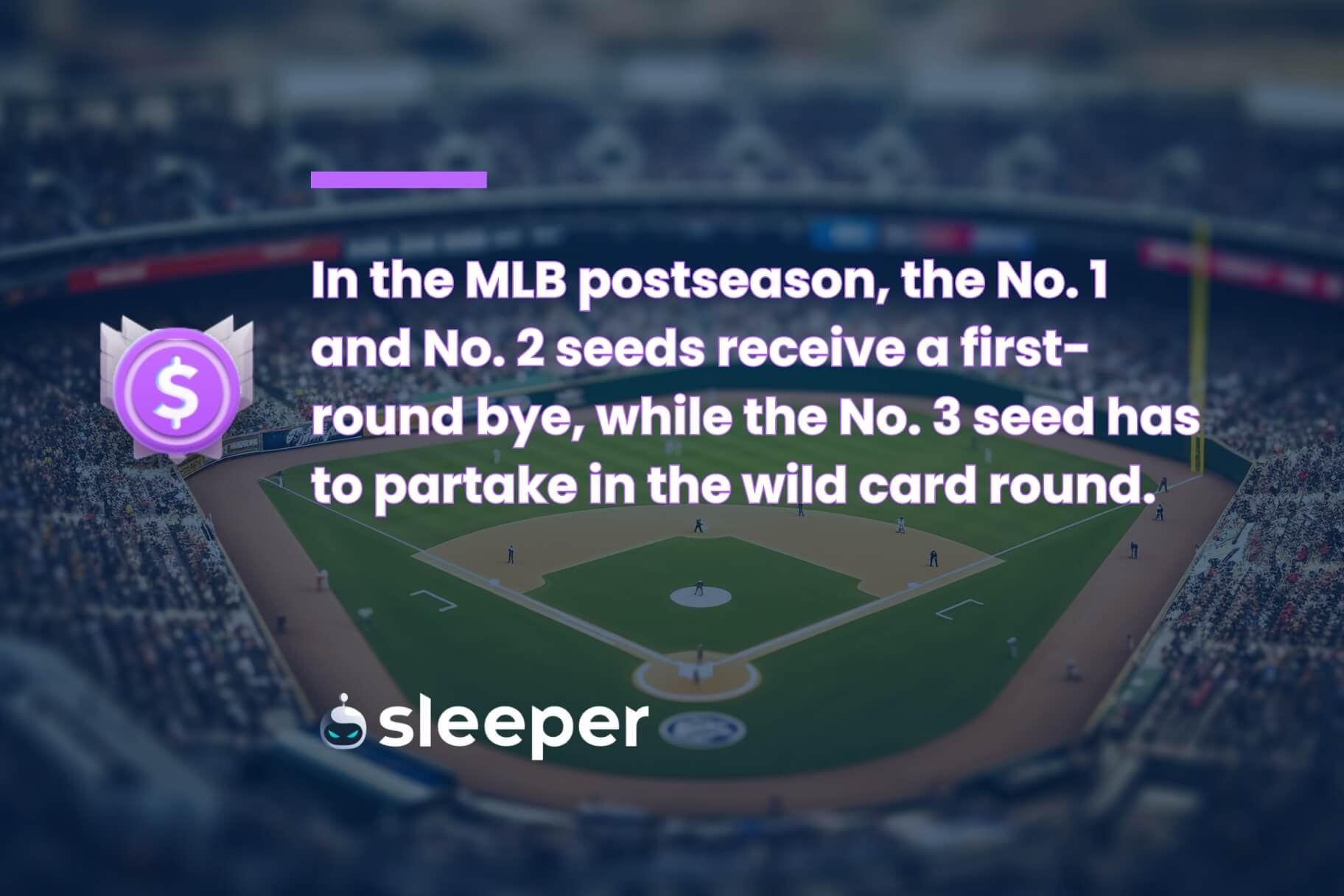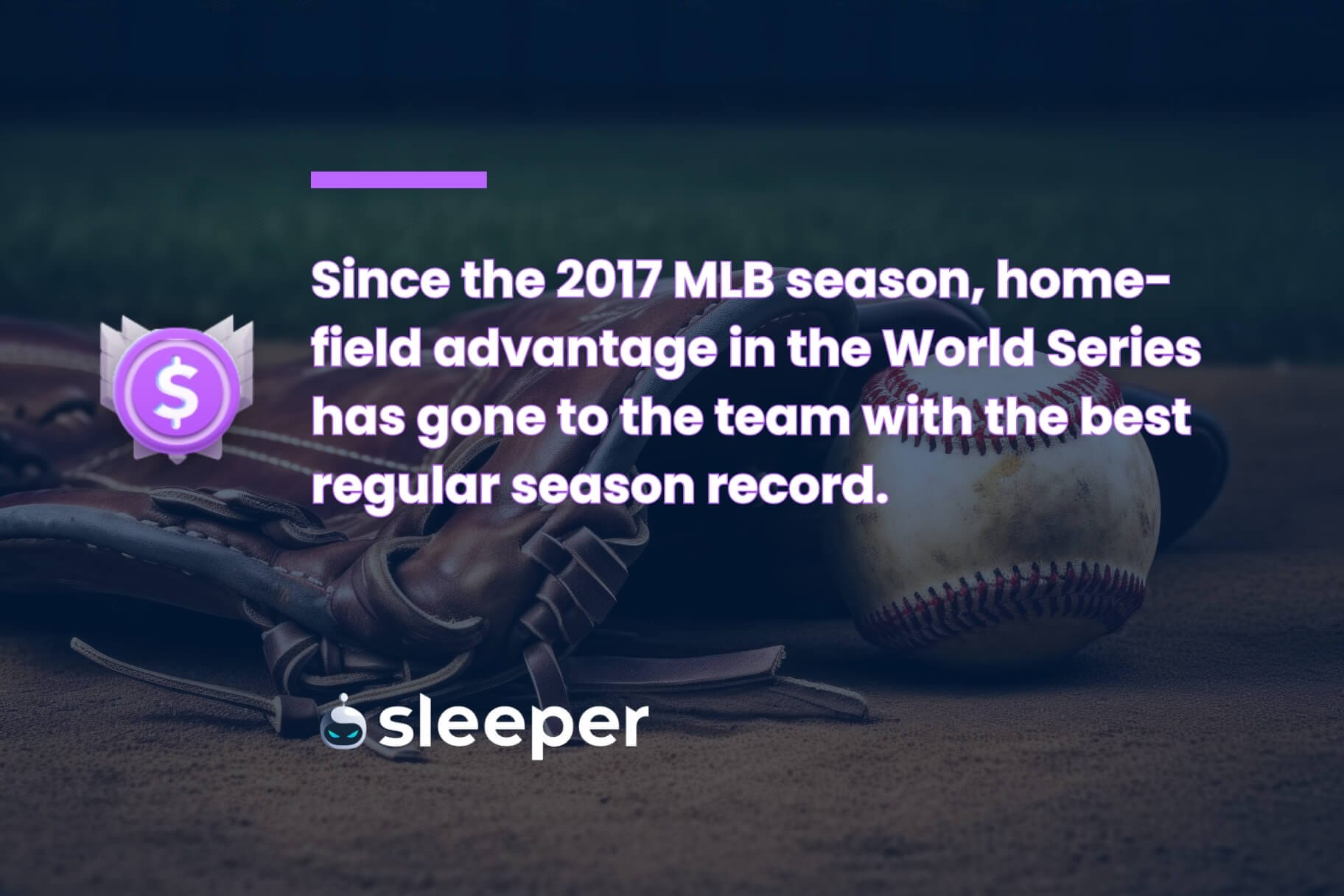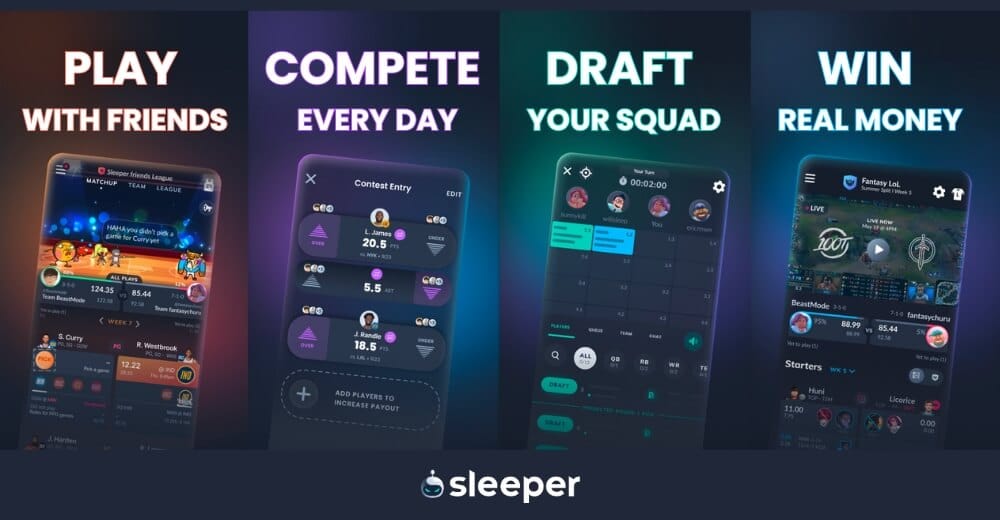Keeping track of which teams get home-field advantage and how many wins it takes to advance in each MLB postseason series can get a bit confusing, but this guide to the current playoff format should clear things up.

Just like the voting process for the All-Star Game and the structure of the Home Run Derby, Major League Baseball seems to change up its postseason format just often enough to keep all of us on our toes.
The most recent shakeup came between the 2021 and 2022 seasons, when the field for the playoffs expanded from 10 to 12 teams, going from a singular wild card game in each league to a full-blown wild card series in October.
Whatever it takes to give more of the sport’s most popular teams a chance to win it all, right?
If you’re even the least bit confused on how the American League and National League produce a World Series champion these days, we’ve got you covered with this series of MLB postseason Q&As.
How Do the MLB Playoffs Work?
How Many Teams Make the MLB Postseason?
Presently, it’s 12 teams, with three division winners and three wild card teams from each league.
If you’re interested in a quick history lesson, though, let’s just say that hasn’t always been the case.
Up until 1969, the postseason was only the World Series. But when MLB expanded from 20 teams to 24 in 1969, it also split each league into an East Division and a West Division, with the winner of each division earning a spot in the League Championship Series.
That format remained in place until a further split to three divisions per league in 1994. There was no postseason that year because of the players’ strike, though, so 1995 was the first year with one wild card team per league, for a total of eight playoff teams per year.
A second wild card spot in each league (for 10 total playoff teams) was added for the 2012 season, and then it expanded to the current format in 2022.
How Are Teams Seeded for MLB Playoffs?
The top three seeds in each league are reserved for the division winners, with seeding based on regular season record. For instance, if Division Winner A goes 100-62, Division Winner B goes 97-65 and Division Winner C goes 90-72, A gets the No. 1 seed, B is awarded the No. 2 seed and C gets the No. 3 seed.
The No. 1 and No. 2 seed receive a first-round bye, while the No. 3 seed has to partake in the wild card round (more on that later).
Beyond the division winners, the three wild card spots are awarded to the three non-division winners with the best records in each league. It is possible that all three wild cards come from the same division, though that hasn’t happened yet.
It’s not uncommon for a league’s best wild card team to have a better record than its worst division winner, but it doesn’t matter. The best wild card team gets the No. 4 seed.

What Are the Tiebreakers for Seeding if Multiple Teams Have Identical Records?
Prior to expansion to a 12-team postseason field in 2022, ties were settled on the field with an additional game, colloquially known as “Game 163.” In 2018, both the NL Central and NL West ended in ties, resulting in a pair of tiebreaker games held on the day after the regular season ended.
Now, however, ties are broken mathematically based on what happened during the regular season.
The first tiebreaker is head-to-head record. This came into play in 2022 when the Atlanta Braves and New York Mets were tied atop the NL East at 101-61. Because Atlanta went 10-9 against New York during the regular season, it won the division.
If head-to-head record doesn’t break the tie, up next is intradivision record, which is your regular-season record against your division. If it had come to that in the Atlanta/New York example, the Mets (50-26 vs. NL East) would have edged out the Braves (48-28).
If that doesn’t break the tie, it goes to interdivision record, which is your record against the other two divisions in your league. Sticking with that 2022 example, New York went 42-24 against the NL Central and NL West, which was better than Atlanta’s 40-26 record. But none of it mattered because Atlanta had the better head-to-head record.
There are further tiebreakers if that somehow still hasn’t done the trick, and it gets much more convoluted if more than two teams are tied for one spot.
The drama of a standalone tiebreaker game is no more. It’s all settled by a spreadsheet now.
How Many Rounds Are in the MLB Postseason?
There are four rounds in the MLB postseason:
- Wild Card Series (best of three)
- League Division Series (best of five)
- League Championship Series (best of seven)
- World Series (best of seven)
The whole thing takes about 30 days to complete, depending upon how many games are needed to decide the World Series.
What’s Different About the Wild Card Round?
Whereas each team is guaranteed at least one home game in each of the latter three rounds, the wild card series are played entirely at the home of the better-seeded team. (Each league’s No. 3 seed hosts the No. 6 seed, while the No. 4 seed hosts the No. 5 seed.)
If anything, though, that home-field advantage has been a disadvantage, with the road team winning five of the eight wild card series played between 2022 and ‘23.
But the Teams That Get a First-Round Bye Generally Take Care of Business in the ALDS/NLDS, Right?
Shockingly, no.
In fact, in the first two years of the 12-team format, all four NL teams that received a first-round bye proceeded to lose in the Division Series, by a combined margin of 12 games to three.
When MLB first announced the new format — giving the two best teams in each league almost a full week of rest in addition to the advantage of getting to start their ace at home in Game 1 against the wild card winner’s No. 3 or No. 4 starter — the prevailing public opinion was that it was too much of an edge, that wild card teams making it to the World Series would be few and far between.
Lo and behold, the controversy/argument has become that the new format is unfair to the best teams, who end up getting rusty while their ALDS/NLDS opponent gains momentum while continuing to play on regular rest.
It’s most likely just a small sample size, with the pendulum liable to swing back in the other direction before a decade of top-seeded dominance. It definitely resulted in a lot of people pushing back against the new format, though.
Which Team Gets Home-Field Advantage in the World Series?
For a staggering 14 years (from 2003-16) after the infamous 2002 All-Star Game that ended in a tie, the league that won the All-Star Game was awarded home-field advantage in the World Series.
This is why the 2016 Chicago Cubs (103-58) had to win Game 7 of the World Series on the road against the 94-67 Cleveland Indians.
Since 2017, though, home-field advantage in the World Series has gone to the team with the best record.
If the two teams happen to have the same record, the tiebreaker rules are the same as they are for seeding, with head-to-head record likely to settle the score. If the Philadelphia Phillies and Houston Astros had met in the 2023 World Series, the head-to-head tiebreaker would have given the Phillies (a wild card team) home-field advantage over the Astros (a division winner). They both went down in their respective League Championship Series, though.

MLB Playoffs: The Impact on Fantasy Baseball
Here at Sleeper, fantasy sports are our jam.
So as it relates to MLB’s postseason format, how could it possibly impact regular-season fantasy baseball?
As far as conventional, full-season leagues are concerned, the biggest impact occurs at the trade deadline, when teams with postseason aspirations pilfer the rosters of the teams that have already set their sights on next year.
Typically, the biggest shakeup comes in the form of save opportunities. For example, ahead of the 2024 trade deadline, Tanner Scott went from a valuable fantasy reliever as Miami’s closer to a much less valuable fantasy reliever as San Diego’s primary eighth-inning guy. Meanwhile, with Scott’s departure, Calvin Faucher instantly went from a set-up man owned in virtually 0% of leagues to a closer with a decent amount of value.
The deadline can impact fantasy value beyond the bullpen, too. Some starters lose jobs; other regulars enter into better opportunities for runs and/or RBI. You might even be able to capitalize on cases where a hitter with a little bit of speed gets traded from a team that rarely steals bases to one that seems to give all its baserunners the permanent green light.
Being nimble with your add/drops at that time of year is crucial.
Another area where the postseason picture can impact your fantasy approach is when deciding which starting pitchers to either pick up in a season-long league or pay for in daily fantasy sports.
If a pitcher is facing a team that has already thrown in the towel and is basically just seeing if any of its September call-ups are worth considering for Opening Day the following season, there’s a decent chance that even a team’s fifth starter could deliver a gem.
Frequently Asked Questions
How many total games are there in an MLB postseason?
Well, that depends on how evenly matched the teams are.
If every series was a sweep, there would be a combined total of 32 postseason games.
Conversely, if every series went the distance, that would result in 53 games.
Most Octobers will land in the middle of that range, though. There were 40 games in 2022 and 41 the following year.
Is there any reseeding in the MLB playoffs?
Nope. Unlike in the NFL, where the Divisional Round pits each conference’s No. 1 seed against its lowest remaining seed, MLB just has a straight bracket.
The No. 1 seed faces the winner of the No. 4 vs. No. 5 wild card showdown, regardless of whether the No. 6 seed upsets the No. 3 seed in the other wild card matchup.
Has a wild card team ever won the World Series?
Yes. Quite a few times, actually.
The Florida Marlins were the first to do so in 1997, which was the third year with one wild card team from each league.
It then happened in three consecutive years with the Anaheim Angels winning in 2002, the Marlins again in ‘03 and the Boston Red Sox breaking their 86-year curse as a wild card team in ‘04.
In the final year before the field expanded from eight to 10, the wild card St. Louis Cardinals won the 2011 World Series.
The 2014 San Francisco Giants and ‘19 Washington Nationals both had to win the wild card game before going on to win the World Series. And in ‘23, the No. 5 seed Texas Rangers toppled the No. 6 seed Arizona Diamondbacks to win their first World Series in franchise history.
(1997, ‘02, ‘14 and ‘23 were each wild card vs. wild card World Series.)
Sleeper: The Best Source for MLB News!
From Opening Day straight through the All-Star Game, the doldrums of August and the highs and lows of the MLB playoffs in October, Sleeper is the place to be for all of your (fantasy) baseball news, notes, wants and needs.
Download the Sleeper app to stay up to date on the latest news, and consider signing up for a fantasy league while you’re there.




